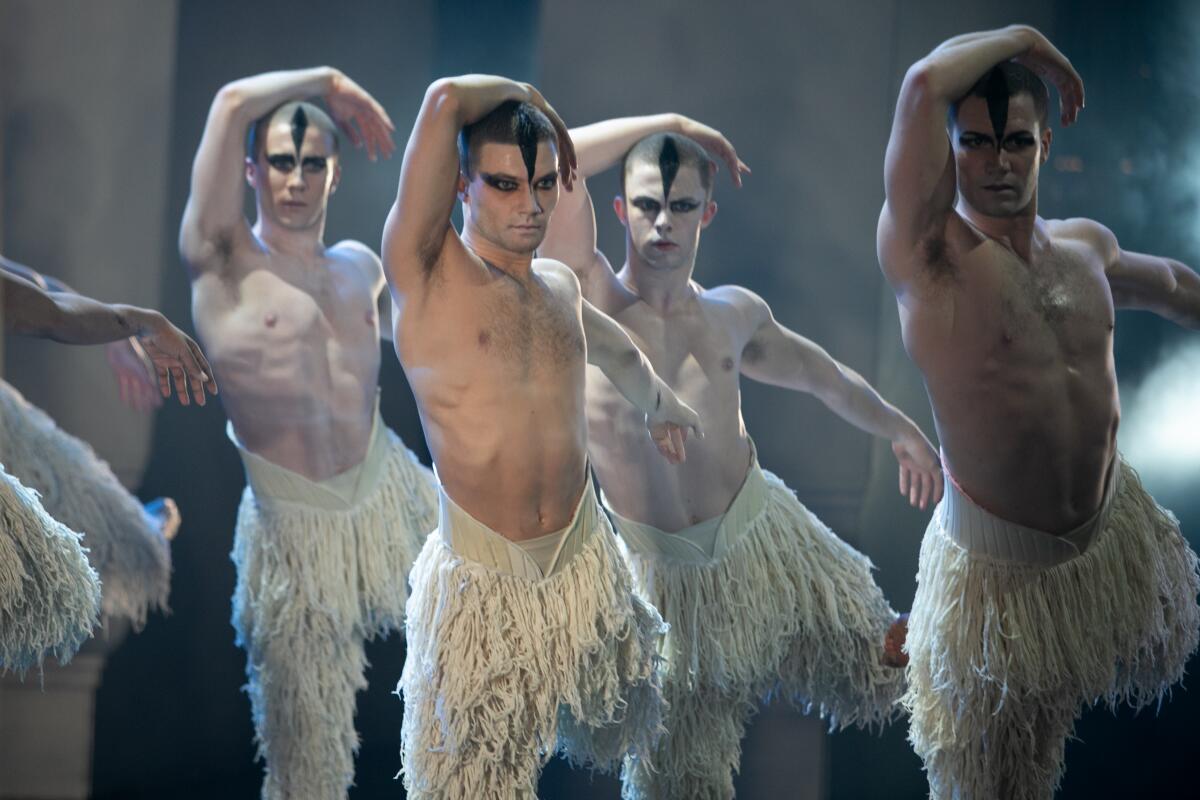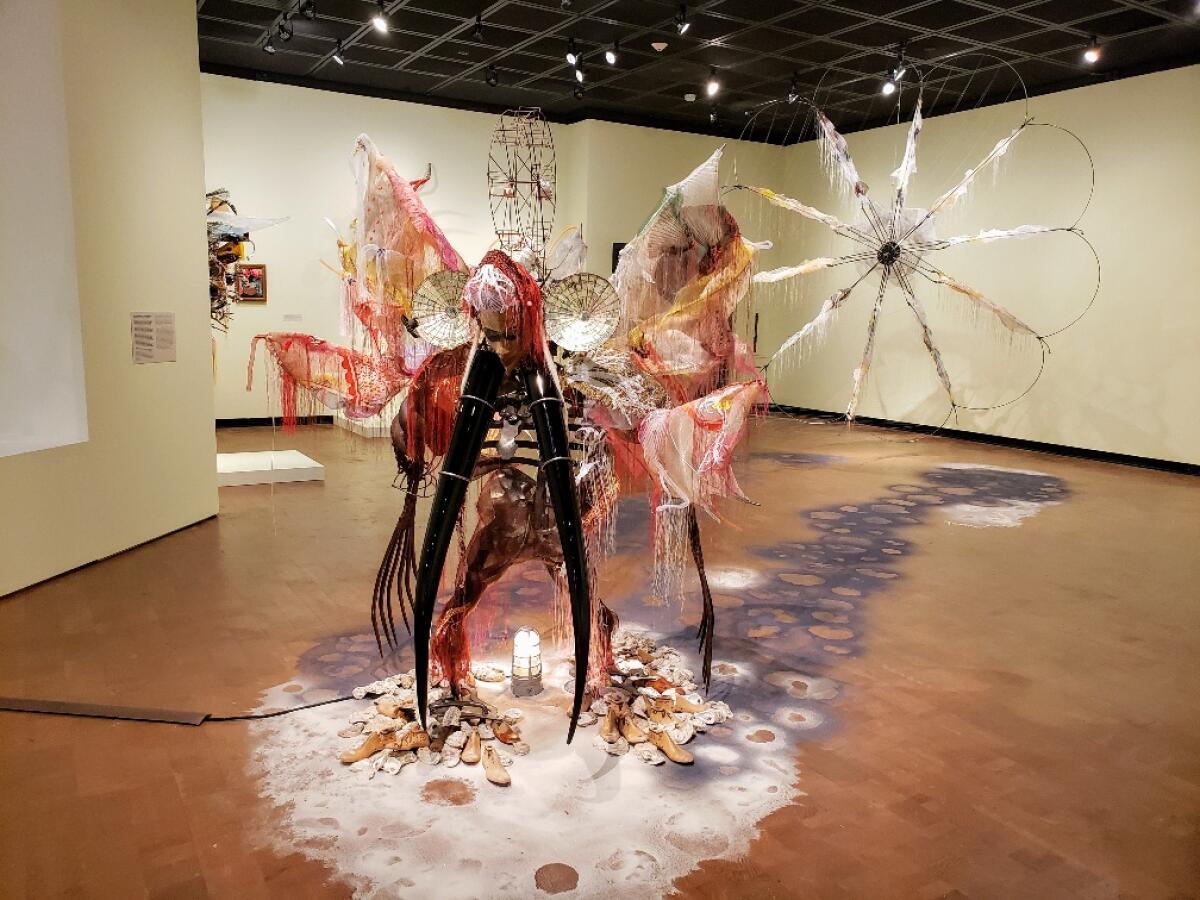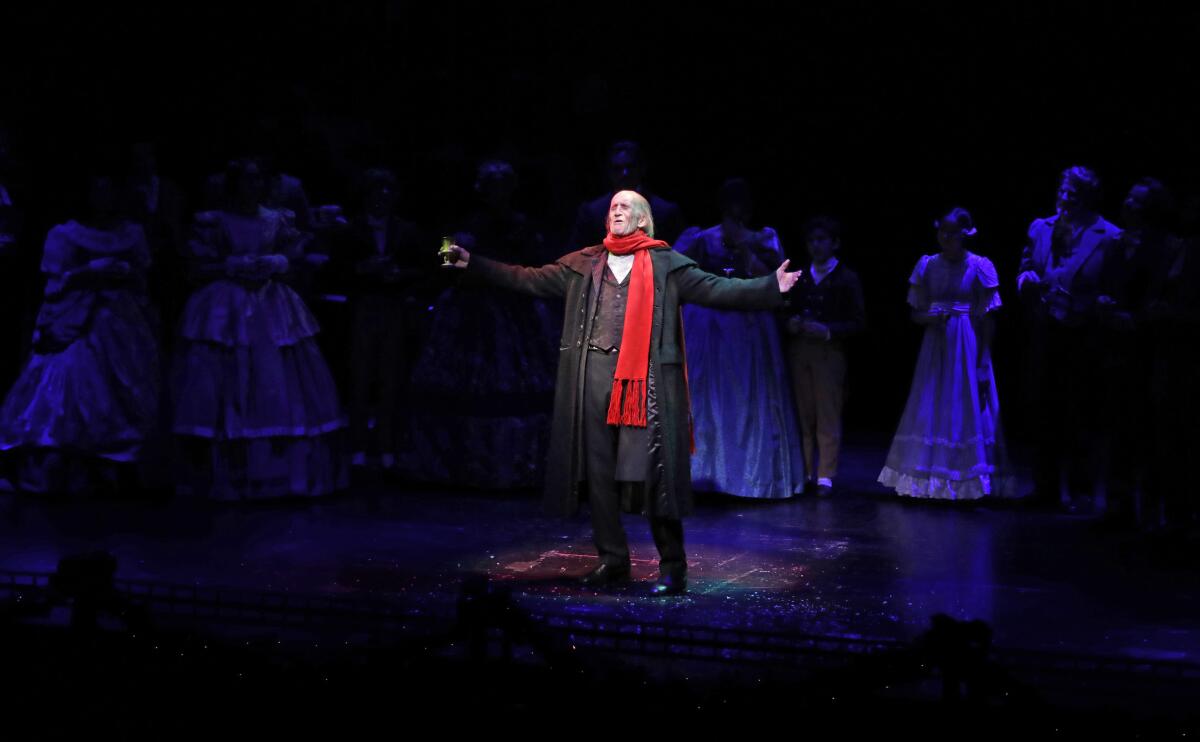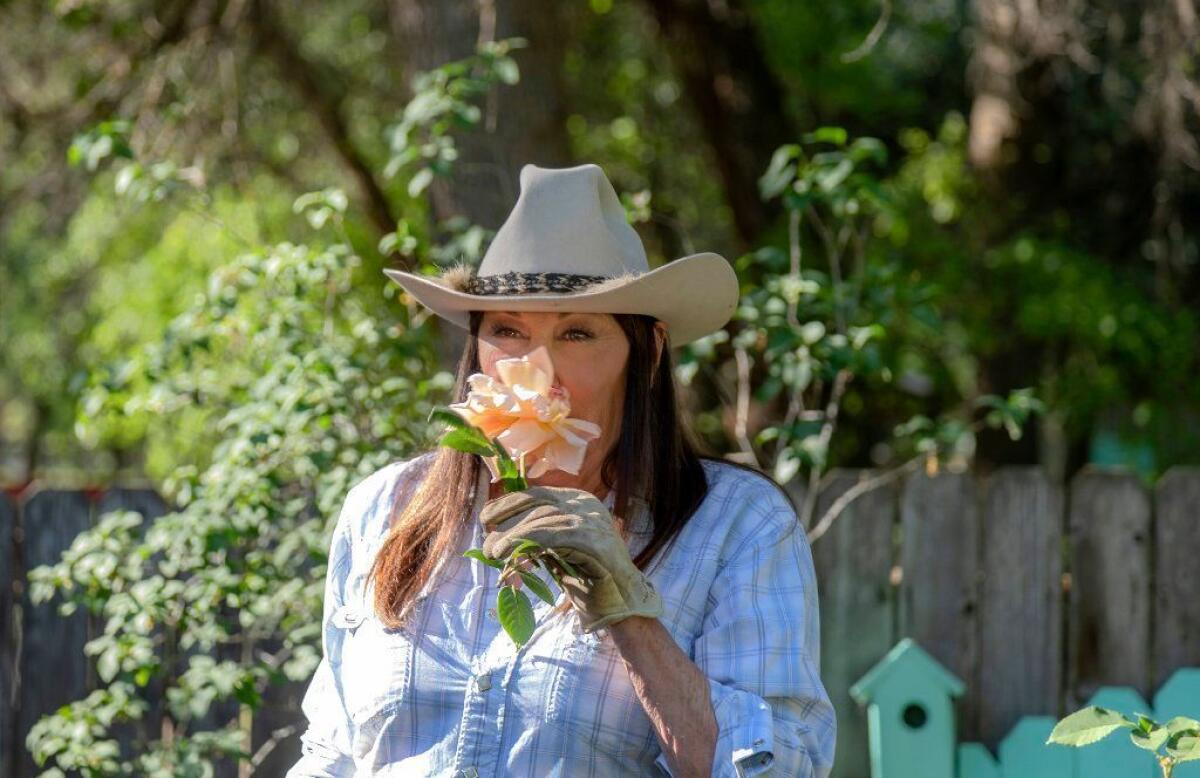Essential Arts: An exclusive backstage view of Matthew Bourne’s smash ‘Swan Lake’

Swans and “Cats” and assemblages that resemble birds. I’m Los Angeles Times staff writer Carolina A. Miranda with your animal-themed year-end arts newsletter — and essential guide to everything doing for New Year’s:
Oh, those swans
In 1995, choreographer Matthew Bourne made history when he remade “Swan Lake” with an all-male corps de ballet. The smash show is now back in L.A., the city where it first had its U.S. premiere in 1997. Times photographer Jason Armond got to hang out in the wings at the Ahmanson Theatre during a recent performance and got a great portfolio of images:

Related: there is finally a proper biography of Marius Petipa, the Franco-Russian choreographer who helped make “Swan Lake” famous. “Marius Petipa: The Emperor’s Ballet Master” by Nadine Meisner, writes critic Joan Acocella, “is low on analysis, but at last someone has collected the facts — the successes, the flops, everybody’s patronymic — and put them down in graceful English prose.”
Two critical paths
Times theater critic Charles McNulty turns his critical eye to the act of criticism after the deaths of Clive James and John Simon. The former was a U.K.-based critic and writer; the latter, a commentator on film and theater for New York magazine. “Simon’s old-school approach was haughty and hermetic, regardless of what he was reviewing,” writes McNulty. “James, who wrote as well about high culture as he did about popular culture, extended a communal embrace that didn’t relax standards but found ways of recalling sublimity even when pointing out dreck.”

In the galleries
“Spectacular collisions in cryptic, sometimes bizarre, always striking new forms come from objects and images scattered from their original homes,” writes Times art critic Christopher Knight of Rina Banerjee‘s assemblages at the Fowler Museum (some of which resemble birds). The artist, who was born in India, raised in London and lives in the U.S., fuses ideas and wide array of materials into her more-is-more sculptures. “Her best work,” adds Knight, “forges harmony from disharmonious elements of colonial and postcolonial worlds.”

Leah Ollman has been doing the white boxes. At Rose Gallery, she reviews a show of photography by Tania Franco Klein, and at the Hammer Museum, she checks out Max Hooper Schneider’s solo show, an installation that is “fascinating in its alienness, disturbing in its familiarity.”
Ollman also has a look at an installation by Edward and Nancy Kienholz at L.A. Louver, a piece that takes the concept of the merry-go-round and turns it into a rumination on how birth can determine everything about our station in life. “We don’t ride this microcosm of life,” Ollman writes, “‘It’s life that takes us for a ride.”
Plus, Sharon Mizota has a look at what’s doing in the various art spaces in Arlington Heights, including Park View/Paul Soto, Chimento Contemporary, Ochi Projects and the Underground Museum.
Dispatch from Mexico
While in Mexico City I caught a pair of intriguing shows by two artists with connections to Los Angeles: Conceptualist Rubén Ortiz Torres, who hails from Mexico City but has lived in L.A. since the ’90s, and photographer Yvonne Venegas, who was born in Long Beach and raised in Tijuana. Both have exhibitions at the Museo Universitario de Arte Contemporáneo that explore the ways in which ideas ping pong back and forth across the U.S.-Mexico border, making for a fascinating narrative about the ways in which the Mexican and the American have regarded each other with both enmity and fascination.
On stage
Want to understand what inspired John Williams’ scores for “Star Wars”? Listen to the work of composer Erich Wolfgang Korngold, writes Times classical music critic Mark Swed. Swed recently attended the production of an early opera by Korngold titled “Der Ring des Polykrates.” The work, he writes, “reveals all the hallmarks not of a born-redundant opera composer but a born-relevant film composer, which the Jewish composer became when forced to flee Nazi Vienna in the 1930s.”
Ashley Lee, who recently immersed herself in all things “A Christmas Carol,” went to check out Hal Landon Jr.’s final performance as Ebenezer Scrooge at South Coast Repertory. Landon has been starring in the role for 40 years. “I think I’ve become a better actor by continually trying to meet the demands of the character every year,” he told her in advance of his last show.

Dispatches from cat-atonia
I can’t get enough stories about the epic stage-to-film fiasco that is “Cats.” Thankfully, entertainment writer Christie Carras has this ranking of performances from the movie, from least to most embarrassing.
Plus, Ashley Lee looks at why the film has no discernible plot. This is because it tries to translate the concept musical into film. “The show’s strongest assets were its subliminally erotic choreography, its complete commitment to the artifice, its inherently theatrical ask of an audience to go along with actors in cat costumes, hissing and purring through the aisles,” she writes — all things the movie pretty much lacks.
What I’m listening to
My drive-time soundtrack as of late has consisted of Anjelica Huston‘s memoir “Watch Me” on audio book. It contains all kinds of terrific stories about modeling, filmmaking and L.A. in the 1970s. Plus, there’s the high-profile romance with Jack Nicholson. And the marriage to sculptor Robert Graham, the Los Angeles artist known for his civic monuments — who once took her to visit with legendary Mexican art patron Dolores Olmedo in Mexico City. I’m sure it’s delightful to read, but I preferred listening to it — for the moments where Huston gets choked up and for the charming way she pronounces “turquoise.” A stirring tribute to the artist’s life.

Your support helps us deliver the news on culture — and this newsletter. Subscribe to the Los Angeles Times.
Ready for the weekend (and New Year’s Eve!)
Matt Cooper has his comprehensive listings on theater, art, dance and classical music. He also teamed up with pop music editor Craig Marks to deliver the 16 best New Year’s events around Los Angeles — and it’s got burlesque, hip-hop, jazz, show tunes and just another band from East L.A. (a.k.a. Los Lobos). All you need is Champagne!
Plus, Mary McNamara has an essential guide to taking kids to art museums over the holidays: “Based on my own experience (three kids, many museums), most children like Van Gogh, Degas, naked people, armor and statues.” Well, who doesn’t like some naked people?
In other news...
— Singers and ballet dancers in Paris have gone on strike in opposition to Emmanuel Macron’s proposals to overhaul the French pension system.
— A worker from the Marciano Art Foundation has filed a lawsuit against Paul and Maurice Marciano over recent layoffs — and is seeking to make the lawsuit a class action.
— Rina Lazo, a Guatemalan-born muralist who got her start as an assistant to Diego Rivera, has died at 96.
— Michael Kimmelman considers the architecture of incarceration.
— Alexandra Lange on two of the year’s most high-profile design failures.
— “If you paint a man on a horse with accurate proportions, he will look puny. To make him look heroic in this posture, an artist must stretch out his torso, broaden his shoulders, and lengthen his legs.” Kriston Capps has a great piece on Kehinde Wiley‘s anti-Confederate memorial in Richmond, Va.
— The time a bunch of filmmakers for “The Two Popes” re-created the Sistine Chapel inside a movie studio in Rome. Whoa.
— Life on the border: Visiting Friendship Park in the Trump era.
— “Imagine a Hallmark movie directed by Stanley Kubrick and you’re getting there.” David Roth on the Trump holiday aesthetic.
— When reality gets sci-fi, how do you make sci-fi seem real? It’s a question that dogs “Neuromancer” novelist William Gibson.
And last but not least...
I give you one of my favorite Instagram accounts of the year: @dogspoorlyphotographed.
Happy 2020, people! May your booze be top shelf and your hangovers nonexistent.
More to Read
The biggest entertainment stories
Get our big stories about Hollywood, film, television, music, arts, culture and more right in your inbox as soon as they publish.
You may occasionally receive promotional content from the Los Angeles Times.











